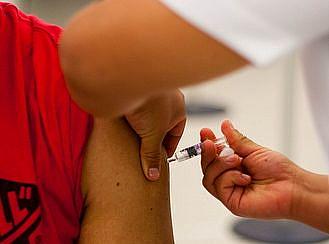Ecological Anxiety: Look for the Values Behind Vaccine Fears

When Jim Carrey started to take a public stance casting doubt on the safety of vaccines, I heard people say they would never be able to watch Dumb & Dumber again.
Some took it even further, saying that Carrey was as dumb – or dumber – than his character Lloyd Christmas. Rather than denying themselves the pleasure of one of the best comedies of the 1990s – or The Cable Guy or The Truman Show or Eternal Sunshine of the Spotless Mind – these folks should sit down with Nathanael Johnson.
Johnson’s recently published book, All Natural*: *A Skeptic's Quest to Discover If the Natural Approach to Diet, Childbirth, Healing, and the Environment Really Keeps Us Healthier and Happier, starts with the premise that his Northern California family and the larger community held two values more sacred than any other: purity and independence. These are two of the same values that are behind the views that Carrey and many others share about vaccines and similar medical advances.
In a recent talk in Seattle, Johnson asked the audience to understand sacred values. People who prize purity above most everything see society becoming disconnected from the natural order, creating stockpiles of toxic chemicals, poisoning our food with additives and steroids, and making it unsafe to walk or bike anywhere because of the millions of motorized weapons we now drive.
Sound extreme? I would argue that if you buy frozen organic vegetables because you assume they will be better for you – even having seen no evidence to support your assumption – you have a little bit of this tendency toward purity in you.
And the same is true for independence. Most people would say they want the power to choose. When this personal freedom runs up against societal harm, though, the debates can get ugly. From big guns to Big Gulps, people will argue forcefully for the right to decide for themselves what they can buy or how they can act. This doesn’t mean they don’t care about school shootings or diabetes.
When Johnson started researching his book, he assumed that there was at least some small way in which the medical orthodoxy was blind to the danger of vaccines. He thought it was likely that medical experts had just missed the dangers inherent in disrupting the natural order through inoculation, and that big business and big government were canting the evidence to rob people of their medical independence.
Reading through the scientific evidence convinced Johnson that vaccines were much safer than the alternative.
“Every fear I investigated had so much convincing, objective data to put it to bed,” Johnson wrote me this week.
Then I'd investigate some doctor who had been vilified, but when I read the same transcripts and emails that people were holding up to prove these guys were evil pro-vaccine shills, they came across instead as thoughtful and humane. Gradually I accepted that I was on the wrong side, but this acceptance was an uncomfortable one. At the core, I still felt like vaccines were unnatural and impure.
When Johnson read about the history of the polio, vaccine, he said, “Things came back into concordance with me.”
Polio – in some ways – is a disease that follows rising affluence. When water and sanitation systems were inadequate prior to the early 1900s in the United States and elsewhere, infants were exposed to the polio virus and – bolstered by the antibodies from their mother’s breast milk – they developed their own antibodies to combat the disease.
As Dr. Julie K. Silver, an assistant professor at Harvard Medical School, explained in Rehab Management in 2002:
Polio's transformation from a sporadic disease to one of epidemic proportions in the early and mid-1900s was paradoxically due in large part to technological advances. Improvements in sanitation unpredictably allowed some diseases, including polio, to flourish because when water supplies consistently were contaminated with the polio virus (prior to improved sanitation), people would be exposed to polio in infancy during which time they had protection from the virus due to their mother's antibodies (from breast milk). With cleaner water, people were now exposed to polio at a later age when they were no longer protected by maternal antibodies. Thus, epidemics began and continued until the development of a vaccine in the mid-1950s.
When Johnson read about polio, he thought about his friends who didn’t want to have their kids vaccinated.
“The Salk vaccine restored the balance,” Johnson said. “I began to see vaccination as a communion with the natural world.”
But not everyone would be so easily convinced. That’s why Johnson argues that writers -- and communications teams for health organizations, too -- need to consider those sacred values. If your audience is framing the conversation in a way that puts purity and independence above the preponderance of scientific evidence, then you need to think differently about how you present your information. Johnson offers three sound pieces of advice:
Remove slick messaging. When a story sounds too much like it was conceived in a board room, people with doubts about medical advances are less likely to trust it.
Show people in their natural environments. The typical picture of a child receiving a vaccination is a sterile room with a white background and the focus on the needle. Show kids outside. Show them playing with animals. Show them playing with toys that don’t look like they were made out of BPA-laced plastic, covered in lead paint.
And avoid corporate sponsorship. This can be a tough one when budgets are tight, but Johnson makes the point that someone who feels that their families are under constant assault by Big Food and Big Pharma will see a friendly looking corporate logo as a sign saying, “stop reading.”
Have your own ideas about sacred values that affect health decisions, write me at askantidote@gmail.com or via Twitter @wheisel.
Photo by El Alvi via Flickr
